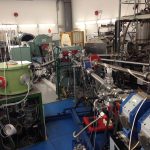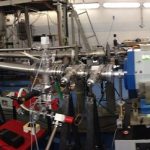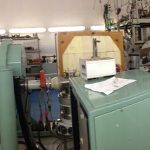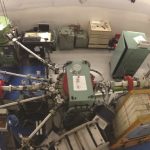VdG – website
Hosting institution: Czech Technical University in Prague
The research infrastructure VdG provides light ions and especially mono-energetic neutrons with tunable energy for basic and applied research in subatomic physics, material physics and for space research. The facility provides also education and training to students and young researchers. With funding from the European Space Agency (ESA), the VdG laboratory modernized (i.e., upgraded and calibrated) its neutron sources and newly built a dedicated testing gamma-ray stations with discrete energies of a wide range. As ESA certified radiation facility, the laboratory provides testing and calibration of radiation sensitive instruments for space research. Additionally, a transportable gamma-ray station was built for testing of integrated instruments, which are designed for orbit, at remote space test centers. The VdG workplace is equipped with additional radionuclide sources (viz., those of X, alpha, and beta rays; compact neutron AmBe source). Besides, the VdG laboratory is furnished with dedicated setups for tagged neutron beam and polarizing beam / polarized target for spin physics experiments, with nuclear analytical methods as well as with beamline for low-energy nuclear reactions, which can be used for astrophysics and fusion studies. For measuring and evaluating experimental results, the experimentalists may employ a wide range of detectors and detection techniques which are available at the workplace. Experiments at the VdG infrastructure are carried out in close cooperation with national and international research teams.
Future development
The development of VdG infrastructure focuses on the modernization of accelerator (new voltage belt, ion beam guides, vacuum pumps, cooling system’s reconstruction, and replacement of the neutron and radiation monitors) and installed supporting equipment (neutron targets, vacuum chambers) as well as of associated experimental setups (nuclear analytical methods). Dedicated beamlines are being newly opened and additional improvements and extensions are being prepared, which enable new experiments and ameliorate the old ones (new neutron target, new beamline for astrophysics and fusion reactions) – associated equipment such as radiation detector instrumentation being included. The short-term upgrades also started; they comprise reconstruction of the polarization experiment, design and construction of a high-power neutron target and installation of rare 3He beam. As regards the provided services, they are to be enlarged in the field of testing semiconductor and scintillating detectors’ radiation hardness. In the long-term prospect, the replacement of the accelerator unit by that of the same type as well as the implementation of automatic control system are foreseen. The plans include also the installation of a new type of pulse neutron generator which is based on D–D, D–T, and T–T reactions in a strong electric field.
Socioeconomic impact
The users of VdG infrastructure come mainly from the national and international research organizations as well as from high-tech enterprises, including the small and medium companies, which can use the facility for testing and development of their prototypes. As the sole particle accelerator at the Czech universities, VdG provides practical and laboratory education of students and young scientists not only from the Czech Republic. The workplace enables beginning researchers to develop new methods and to test their own setups in a local facility. Similarly, the laboratory provides valuable testing and calibration of scientific instruments and detectors prior installation elsewhere, including other laboratories and larger experiments abroad.



